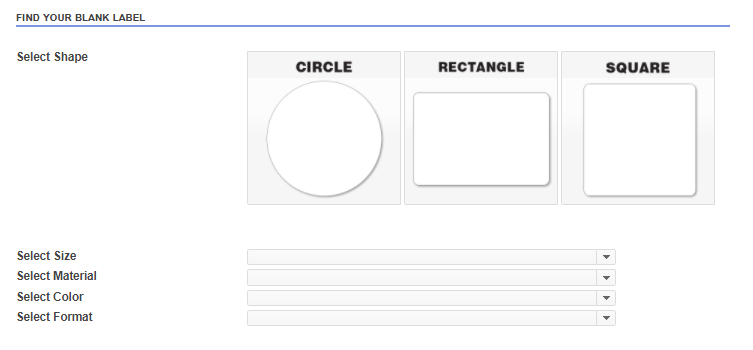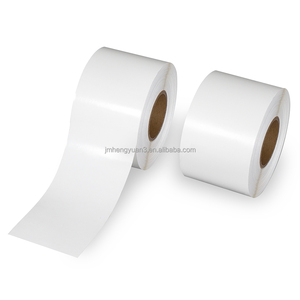Shop Blank Labels with various shapes.
Shop Blank Labels with various shapes.
Blog Article
Comprehending How Blank Labels Work to Boost Your Labeling Experience
Comprehending the auto mechanics of blank labels is essential for enhancing your labeling methods throughout numerous contexts. To fully realize exactly how these labels can change your procedures, one need to consider the different types available and the myriad means they can be customized to match specific requirements.

Benefits of Utilizing Blank Labels
Blank labels offer a functional remedy for different identifying demands, making them very useful in both personal and expert setups. Their versatility permits users to produce tailored labels customized to certain demands, enhancing organizational efficiency. Whether used in home workplaces, retail settings, or industrial applications, blank labels facilitate the identification and categorization of items, records, and personal products.
One considerable benefit of blank labels is their cost-effectiveness. By enabling individuals to publish just the labels they need, waste is decreased, and inventory monitoring comes to be more convenient. In addition, blank labels work with different printing methods, consisting of inkjet and printer, making them available for various individuals.

Furthermore, making use of blank labels simplifies the process of upgrading information, as users can quickly print new labels to replace out-of-date ones, ensuring that all items and papers are accurately classified. In general, blank labels provide a sensible and efficient labeling service for diverse applications.
Types of Blank Labels Available
What options are readily available when it comes to blank labels? Blank labels come in a selection of types, each fit for different applications and preferences.
Another prominent choice is synthetic labels, typically made from products like polyester or vinyl. These labels are known for their resilience and resistance to water, chemicals, and tearing, making them appropriate for severe environments. They are generally utilized in industrial setups or for labeling products that might be exposed to moisture.
Additionally, there are thermal transfer labels, which require a printer that utilizes warmth to move ink onto the label surface. These labels are favored for their top quality print and long life.
Last but not least, specialized labels cater to specific needs, such as removable labels for momentary use or high-temperature labels for extreme problems. Comprehending these choices enables users to select one of the most ideal blank tag for their special labeling needs.
Personalization Options for Labels
A wide array of modification options is available for labels, allowing individuals to tailor them to details needs and branding needs. Customers can select from different sizes, forms, and materials to make sure that the labels efficiently fit their desired objective. Usual products consist of paper, polyester, and plastic, each providing various levels of sturdiness and visual appeal.
Color options play a critical role in modification, allowing brands to preserve consistency with their business identity. Users can select from a range of shades or perhaps choose for custom-made printing to match particular article branding aspects. Furthermore, labels can be printed with one-of-a-kind styles, logos, and text, improving brand acknowledgment and visual impact.
Another essential facet is the choice of adhesive. Labels can be designed with permanent, removable, or repositionable adhesives, depending upon the application needs. This flexibility enables reliable labeling solutions across numerous atmospheres, from retail to industrial settings.

Tips for Effective Labeling
Effective labeling goes beyond personalization; it additionally entails critical considerations that boost functionality and interaction. To attain effective labeling, begin by clearly defining the function of each label. Consider the information that needs to be conveyed and guarantee it is provided in a straightforward manner. Utilizing concise language and preventing jargon can dramatically enhance understanding.
Next, prioritize exposure by picking appropriate shades and typefaces. High comparison between text and background enhances readability, while larger font styles promote fast recognition. In addition, guarantee that labels are placed in a constant and sensible way, making it simpler for individuals to situate and analyze info.
Consider the toughness of labels. Select products fit for the details setting where the labels will certainly be used, whether it be inside or outdoors. Water resistant or tear-resistant choices may be needed relying on the context.
Lastly, consistently review and update your labels to show any type of modifications in information or use. This positive strategy not only preserves clarity however also prevents confusion over time. By complying with these tips, you can make best use of the performance of your labeling efforts, guaranteeing they serve their intended objective effectively.
Applications of Blank Labels
Blank labels provide many applications throughout numerous industries, making them a vital device for company and communication. These versatile labels are commonly used in storehouses for inventory administration, permitting businesses to conveniently identify and track products. By applying blank labels to storage space containers, racks, or pallets, companies can improve their procedures and lower the likelihood of errors.
In the health care sector, blank labels play an important role in classifying drugs and medical supplies, making certain proper recognition and usage. Personalized labels can consist of necessary information such as dose, expiration additional hints dates, and patient Clicking Here information, improving safety and compliance.
In retail, blank labels help in rates products, giving promos, or identifying shelf places, which inevitably boosts the client experience. They enable for quick updates to prices or product details without the need for pre-printed labels.
In addition, blank labels are advantageous for individual use, such as organizing home offices, crafting, or classifying food containers. Their versatility enables people to produce tailored solutions that fulfill certain demands. Generally, the applications of blank labels are substantial, underscoring their relevance in promoting performance and clarity in different settings.
Verdict
In final thought, blank labels offer a functional and efficient option for numerous classifying requirements. Inevitably, the integration of blank labels into functional processes contributes to enhanced performance, making them an important source for both personal and expert usage.
Report this page